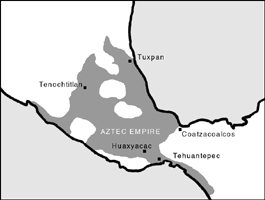 username@email.com
username@email.com
In the coming pages, we’ll look at some of the legal and intellectual contributions of these early civilizations. We’ll then turn our attention to some of the great empires of the Middle East and the pre-Columbian Americas.
In the preceding lesson, we quickly reviewed some of the major civilizations centered in the Middle East. We also examined some of China’s dynasties, specifically the Shang Dynasty and its advancements in metalworking and writing.

The Code of Hammurabi
As civilizations developed, moral and ethical traditions evolved closely with religion. Early Judaism produced an oral Torah that began to make standards of ethics clear to the people who followed the teachings. These early standards laid much of the groundwork for the moral and ethical traditions of Western civilization. For example:
These early ethical concepts found their way into the Christian tradition, eventually forming some of the ethical groundwork for Western civilization.
Ancient Greco-Roman ethics also left a lasting legacy. In the interest of fairness, the Athenian Greeks first practiced democracy and ostracized tyrants. Spartan Greeks employed a lawmaking body known as the senate to prevent absolute power from falling into the hands of one man. Both ancient Greece and Rome cultivated the idea of national citizenship as a privilege.
Other innovations of ancient Greece and Rome persevere today. The open athletic competitions first held in Olympia continued through the ages. Ancient Roman municipal planning serves as a prototype for modern planned communities. Roman archivists such as Pliny the Elder compiled the first encyclopedias, and mathematical and philosophical advances made by Pythagoras, Plato, Socrates, and Aristotle are still alive and well in our classrooms.
Greece and Rome were not home to the only philosophical juggernauts of the ancient age. Jesus, Buddha, Confucius, Socrates, Plato, and Aristotle and other major philosophic and religious thinkers of ancient times continue to influence modern politics, ethics, and social practices. Even some of the laws of ancient times carried down to this modern era; the commandments presented by Moses and the Periclean amendments to Athenian rules of citizenship both serve as models for laws of today.
Most periods of history feature cultures attempting to stretch their influence over a wide swath of their region, and in some cases, the planet. Shifting allegiances and powerful personalities of the ancient age of empires have given history its fair share of famous and infamous characters.
The military and political leader who presided over the Roman world’s transformation from republic to empire, Julius Caesar is one of the most famous historical figures. His days of rule and conquest ended in 44 BC when he was assassinated by a group of conspirators including Marcus Brutus.
Also known as Octavian, he was Rome’s first emperor. His autocratic rule ended the Roman civil wars. He was the nephew and adopted heir of Julius Caesar. His iron-fisted rule lasted until his death in AD 14.
The last Greek ruler of Egypt, Cleopatra, was forced from her throne by her brother in 40 BC. She raised a mercenary army to oust her brother, joining her forces to those of Julius Caesar, who conquered Egypt and restored Cleopatra’s power. She was romantically linked to Caesar (their son was Ptolemy XV) and, later, to Roman political leader Mark Antony. With Octavian’s armies swarming toward Egypt, she committed suicide in 30 BC.
Alexander was the Macedonian king who conquered the Persian Empire and vast stretches of other lands in the third century BC. One of the most powerful military leaders of the ancient world and a ruler of an unprecedented number of lands and peoples, Alexander died of disease in 323 BC.
Actually a sprawling collection of different routes, the Silk Road was a connecting force between the great civilizations of the West and East. The Chinese attempts to reach trading partners in the West and the Roman conquest of Egypt in the first century BC helped bring the two parts of the globe together. Nominally, silk was the traded commodity in question, but that trade also brought an exchange of ideas, cultural practices, and peoples.
Across the Atlantic, the Mesoamerican empires of the Aztecs, the Maya, and the Incas rivaled those of ancient Europe and Asia. In the early 1300s, the Aztecs established their capital of Tenochtitlan, built on the site of modern-day Mexico City. The Aztecs had a distinct class system, schools, and a complex religion.

Aztec Empire
The Maya of southern Mexico and northern Central America developed numerous city-states around AD 200. Archaeological ruins reveal their massive temples and stelae (large stone slabs carved with images of important people and events). The Incan Empire stretched along the west coast of South America; the Incas developed a civil service system and also maintained a basic federalist system of government. Both the Incas and the Aztecs eventually met their doom when they came into contact with the Spanish conquistadors.